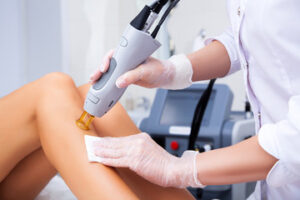Whether you have cracks in the walls or doors that don’t open and close properly, this is an indication your foundation is shifting. This is a problem that can lead to serious damage if left unattended.

Identifying and repairing these problems early is essential to maintaining your home’s value and preventing further structural issues. There are several different repair methods, including masonry patches and epoxy injections. Click Here to learn more.
A foundation repair expert can fix issues like cracking walls, buckling floors, and sticking doors or windows. These problems can lead to more expensive and extensive repairs if left unaddressed.
Having these issues can also decrease the value of your home and prevent it from being as functional as possible. It’s important to address the problem quickly to avoid further damage and maintain or boost the resale value of your property.
Foundation repairs are essential to keeping your family safe and ensuring that your home functions properly. There are several warning signs that can indicate the need for foundation repair, including leaning walls, buckling or bowing floors, and doors and windows that won’t open or close. These problems can also create leaks, which can damage the structure of your house and cause health and safety hazards for your family.
If you notice any of these symptoms, it’s critical to contact a professional for a foundation inspection right away. Professionals can recommend the best solution for your specific situation, such as piering or underpinning to stabilize your foundation. If the issue is caused by water, then you may need to install a drain tile system to prevent hydrostatic pressure from building up in your soil and damaging your foundation.
In addition, a professional can perform leveling to restore your home’s original elevation. This will close up any cracks, re-align doors and trim, and help your home work its best again.
Regardless of what solution you choose, the process can take a few days to a couple weeks to complete. The timeframe will depend on the size of your home, the severity of the issue, and weather conditions. A good contractor will communicate with you throughout the process to let you know what to expect and give you an accurate estimate of how long it will take for your project to be completed.
It’s important to hire a licensed and experienced contractor for your foundation repairs. This will ensure that the job is done correctly and that you receive the proper warranties and guarantees.
Restoring the Original Elevation
The foundation repair process can lift and stabilize a slab so it returns to its original elevation. This restores functionality and aesthetics and prevents further structural damage. If left unattended, these issues will worsen over time and jeopardize the stability of your home or commercial structure. Rather than waiting for a disaster to happen, it is always best to call on a professional to fix the problem right away.
Generally, a thorough inspection will reveal any potential problems with your foundation and determine the extent of the issue. Then, site preparation can begin. Depending on the type of foundation repair you need, this may involve removing any plants or debris that could get in the way of the construction process. Foundation repairs can also require excavating part or all of the affected area.
When a foundation sinks or shifts, it can cause serious structural problems for your home or business. This might include hairline cracks, sagging floors or walls, doors or windows that won’t close properly, and efflorescence, which is a whitish crystal residue often caused by water seepage. These problems can be exacerbated by changes in the soil’s moisture levels, due to weather fluctuations or poor drainage.
Foundation repair methods can stabilize concrete slabs and return them to their original level. This can repair cracks, close up gaps, re-align doors and trim, and prevent further damage. These repairs can also help you avoid costly excavation and replacement costs.
There are several ways to perform a foundation repair, including piering, mud jacking, and slab lifting. Each method works differently, but all have similar results. Piering involves driving steel posts through unstable soil, then hydraulic jacks lift the foundation to its original level. This is a less invasive option than complete excavation and offers a faster turnaround than other types of repairs.
Mud jacking is another popular form of foundation repair that uses a liquid polyurethane to fill the gap between the foundation and the soil. This process is quick and effective, and it can be used to fill small gaps or cracks in a concrete slab. It is also a great choice for patching leaks in a basement, since the liquid polyurethane will expand to fill any gaps and seal them.
Preventing Further Damage
If the foundation of your home is damaged, then other parts of your home may start to suffer as well. Problems like sticky doors and windows, uneven floors, buckling walls and sagging ceilings can cause structural damage and lower your property value. Proper foundation repair prevents these problems and keeps your home functioning properly, increasing its quality, safety and value.
Identifying problems and taking prompt action is critical to preventing further damage to your home and to minimizing the cost of the repairs. A professional inspection will help you assess the condition of your foundation and determine the most suitable repair methods. The inspection process can include a thorough examination of the structure, soil and surrounding areas to understand the cause of the problems. This can also include an engineering analysis to determine the best repair methods and techniques.
Foundation problems are often caused by shifting or settling of the soil underneath your home. This can occur due to evaporation of moisture, shrinking soil, tree roots, or poor construction. Foundation repair can stabilize your home by replacing or adding support systems, such as concrete piers, steel piers or bell-bottom piers, to keep the structure level and reduce the risk of further damage.
When choosing a contractor for foundation repair, consider their experience and track record. Check their license and insurance to ensure they are qualified, reputable and trustworthy. Testimonials and reviews from past clients can also be a good indicator of their reliability and quality of work. It’s also important to find a local contractor with extensive knowledge of your area’s unique soil and climate conditions as they will be better equipped to recommend the most effective solutions for you.
Preventing Water Damage
Water damage isn’t just a structural problem, it can also lead to mold, mildew, and other health problems inside the home. Thankfully, if you catch it early, there are steps that can be taken to stop the damage before it gets out of hand.
One of the most effective ways to prevent water damage is to seal cracks in foundation walls and apply waterproof coatings to protect against future moisture. This is done by using materials like hydraulic cement, epoxy, and polyurethane.
Another way to reduce the risk of moisture damage is to improve your home’s drainage system. Rainwater that is not properly directed away from the house will puddle around and under the foundation, causing excessive soil saturation and pressure on the foundation’s walls. This can lead to sagging or sinking of the foundation and may also cause leaks into basements and crawl spaces.
Properly grading the soil around your foundation is important, as well. The soil should slope away from the home to prevent excess saturation and to allow for proper water drainage. If the soil has eroded, it is important to stabilize the area with a retaining wall to prevent future settlement and sinking of the foundation.
Unstable soils can lead to uneven settling and sinking of the foundation, which can manifest as cracks in the walls, crooked floors, and doors and windows that jam or fail to close correctly. Foundation repair is often done to address this issue by leveling and stabilizing the foundation on piers or bell-bottom piers, or by mudjacking the foundation.
When repairing foundations, it is also a good idea to add drain tile and a sump pump to help remove excess moisture from the soil and direct it away from the foundation. The drain tile and sump pump system will also help to prevent hydrostatic pressure that can cause the foundation to crack.
Lastly, it is also important to regularly inspect your foundation for any signs of physical or water damage. Any problems should be addressed promptly by a qualified professional to minimize the damage and keep it from getting worse.


